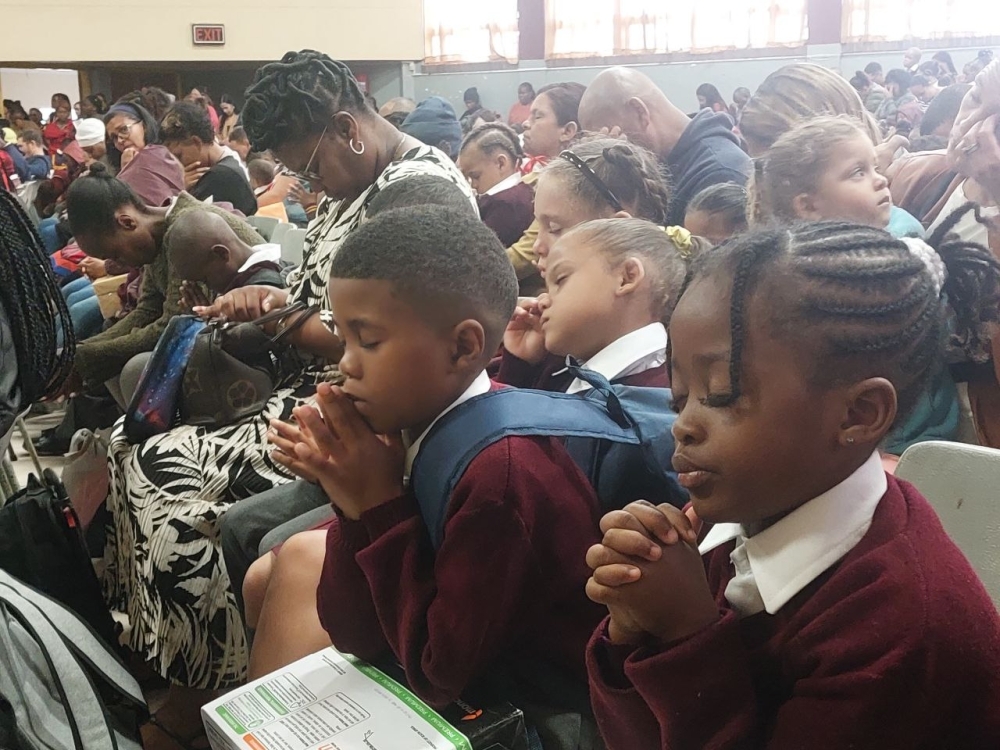Urbanisation impacts school placements
At least 53 375 pre-primary and 98 253 grade one learners kicked off the school year yesterday alongside their older peers in about 1 722 state schools nationwide.
Marking the occasion, education ministry executive director Sanet Steenkamp said several new schools have reduced the pressure on established schools in various regions.
This ministry has set up 537 classrooms in the last five years.
According to her, seven brand-new schools in the Ohangwena Region are succeeding in alleviating the need in rural areas, but there is still cause for concern in Eenhana. Despite this, Steenkamp believes that there were no remarkable ailments in the provision for Eenhana's grade one and grade eight learners.
However, in Zambezi, the ministry is experiencing challenges due to urbanisation.
"Many parents insist on placing their children in the Katima [Mulilo] area. This results in many schools in urban areas being overcrowded and schools in rural areas becoming empty," the executive director said.
Meanwhile, learners hoping to complete their Advanced Subsidiary (AS) qualification are expected to be settled in schools by 22 January.
Smooth sailing
According to Swakopmund Secondary School principal Sinvula Sibanga, the integration of grade eight learners went smoothly.
The school accommodated six grade eight classes, but had to make space in these classes for approximately one-and-a-half classes of children who have to repeat the year.
"The process is managed very well. We are not overwhelmed by parents who come knocking for a place, because this is handled at regional level. I knew today that the parents who showed up here were the parents of children who had already been accepted to the school," he said.
Sibanga further encouraged parents who are still hoping for a place for their child to exercise patience.
"We just have to give the schools a chance first. Every child will be placed in a school, regardless of the grade in which they have to be placed. Let the schools first manage the arrival of the new learners. After that, the capacity to help those who don't have a place yet can be assessed.”
No-shows
Keetmanshoop Secondary School’s Janine Diergaardt painted a different picture. She said approximately 30% of the learners who were expected at the school yesterday morning did not turn up for the first day.
She attributed this to challenges regarding school uniforms and stationery as well as the fact that many of the learners who attend school there do not live in Keetmanshoop and have to travel from elsewhere.
Diergaardt said around 400 learners arrived for their first day yesterday, but the absent learners’ return will mean the school will be full.
"Today we tried to get hold of the parents of these learners and the majority indicated that they were going to return," she said.
"I believe we will accommodate more children who are looking for a place during the week. Many parents who are not in Keetmanshoop have called and asked if there is a place.”
- [email protected]
Marking the occasion, education ministry executive director Sanet Steenkamp said several new schools have reduced the pressure on established schools in various regions.
This ministry has set up 537 classrooms in the last five years.
According to her, seven brand-new schools in the Ohangwena Region are succeeding in alleviating the need in rural areas, but there is still cause for concern in Eenhana. Despite this, Steenkamp believes that there were no remarkable ailments in the provision for Eenhana's grade one and grade eight learners.
However, in Zambezi, the ministry is experiencing challenges due to urbanisation.
"Many parents insist on placing their children in the Katima [Mulilo] area. This results in many schools in urban areas being overcrowded and schools in rural areas becoming empty," the executive director said.
Meanwhile, learners hoping to complete their Advanced Subsidiary (AS) qualification are expected to be settled in schools by 22 January.
Smooth sailing
According to Swakopmund Secondary School principal Sinvula Sibanga, the integration of grade eight learners went smoothly.
The school accommodated six grade eight classes, but had to make space in these classes for approximately one-and-a-half classes of children who have to repeat the year.
"The process is managed very well. We are not overwhelmed by parents who come knocking for a place, because this is handled at regional level. I knew today that the parents who showed up here were the parents of children who had already been accepted to the school," he said.
Sibanga further encouraged parents who are still hoping for a place for their child to exercise patience.
"We just have to give the schools a chance first. Every child will be placed in a school, regardless of the grade in which they have to be placed. Let the schools first manage the arrival of the new learners. After that, the capacity to help those who don't have a place yet can be assessed.”
No-shows
Keetmanshoop Secondary School’s Janine Diergaardt painted a different picture. She said approximately 30% of the learners who were expected at the school yesterday morning did not turn up for the first day.
She attributed this to challenges regarding school uniforms and stationery as well as the fact that many of the learners who attend school there do not live in Keetmanshoop and have to travel from elsewhere.
Diergaardt said around 400 learners arrived for their first day yesterday, but the absent learners’ return will mean the school will be full.
"Today we tried to get hold of the parents of these learners and the majority indicated that they were going to return," she said.
"I believe we will accommodate more children who are looking for a place during the week. Many parents who are not in Keetmanshoop have called and asked if there is a place.”
- [email protected]




Comments
Namibian Sun
No comments have been left on this article